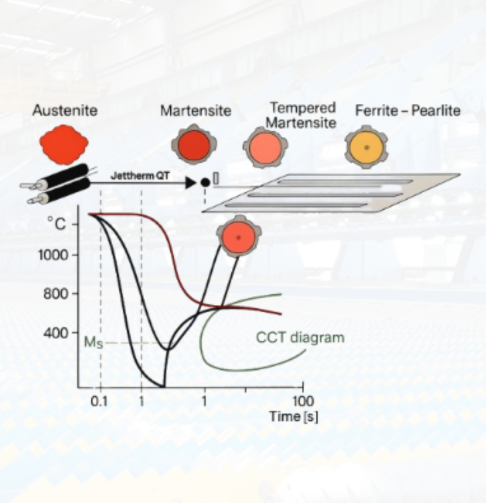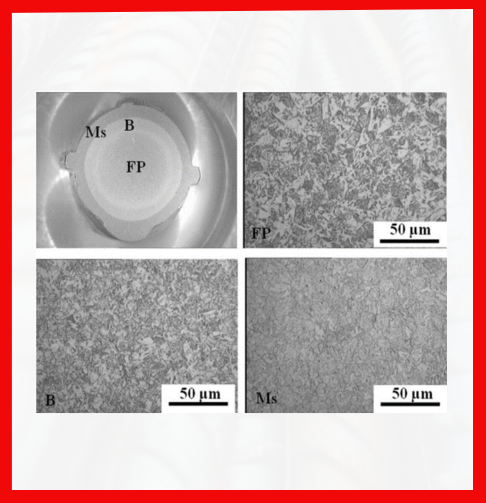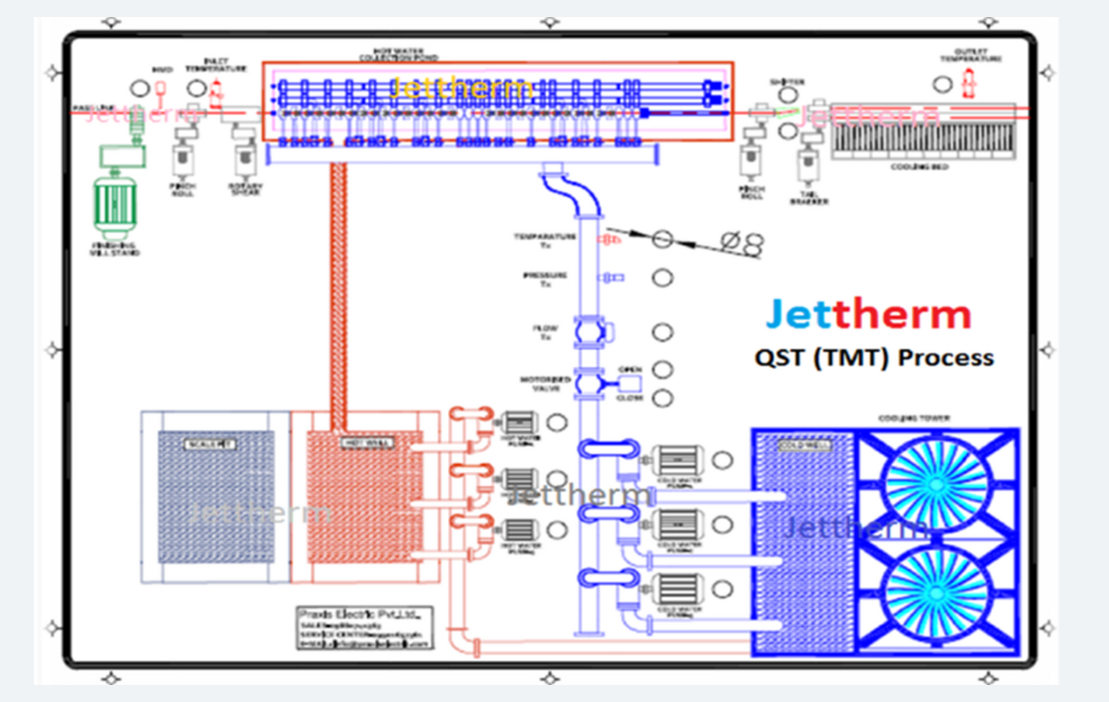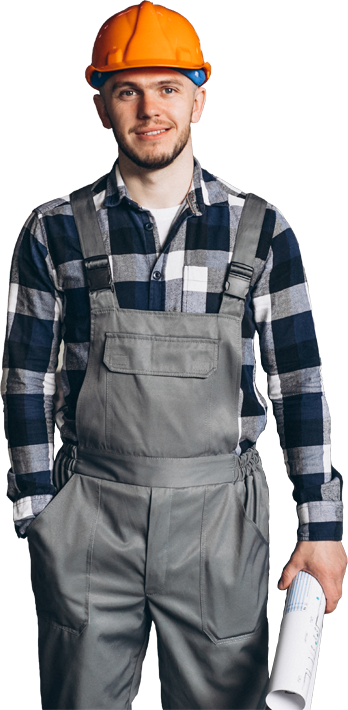Innovative Processes and Advanced Technologies
The rebar leaving the last stand of the hot rolling mill passes through a special water-cooling section. The cooling efficiency of this installation is such that a surface layer of the bar is quenched into martensite, the core remaining austenitic. The quenching
Treatment is stopped when a determined thickness of martensite has been formed under the skin (outer part of the bar section dropping below the martensite transformation starting temperature Ms.)
When the rebar leaves the intense cooling section, the temperature gradient established in its cross section causes heat to release from the centre to the surface. This increasing of the surface layer temperature results in the self-tempering of the martensite.
The name Jettherm® QT has been chosen to illustrate the fact that the martensitic layer is tempered by the heat left in the CORE at the end of the quenching stage;



Finally, during the slow cooling of the rebar on the cooling bed, the austenitic core transforms into ferrite and perlite or into bainite, ferrite and perlite.
This process is able to produce high strength weldable rebars with low carbon and low manganese contents. No addition of costly micro alloying elements such as Vanadium or Niobium is necessary, saving today about $ 75-$100 $/ton of product.
Since the same billet composition can be used for different steel grades and diameters, a significant rationalization takes place in the plant. The water quenching and self-tempering treatment is applied directly in line after the finishing stand without any reduction of rolling speed or loss of productivity.
By a judicious combination of Jettherm® QT treatment and micro alloying chemistry, new higher grades (YS > 700 MPa, TS > 800 MPa) can be realized, especially for large diameters up to 75 mm



